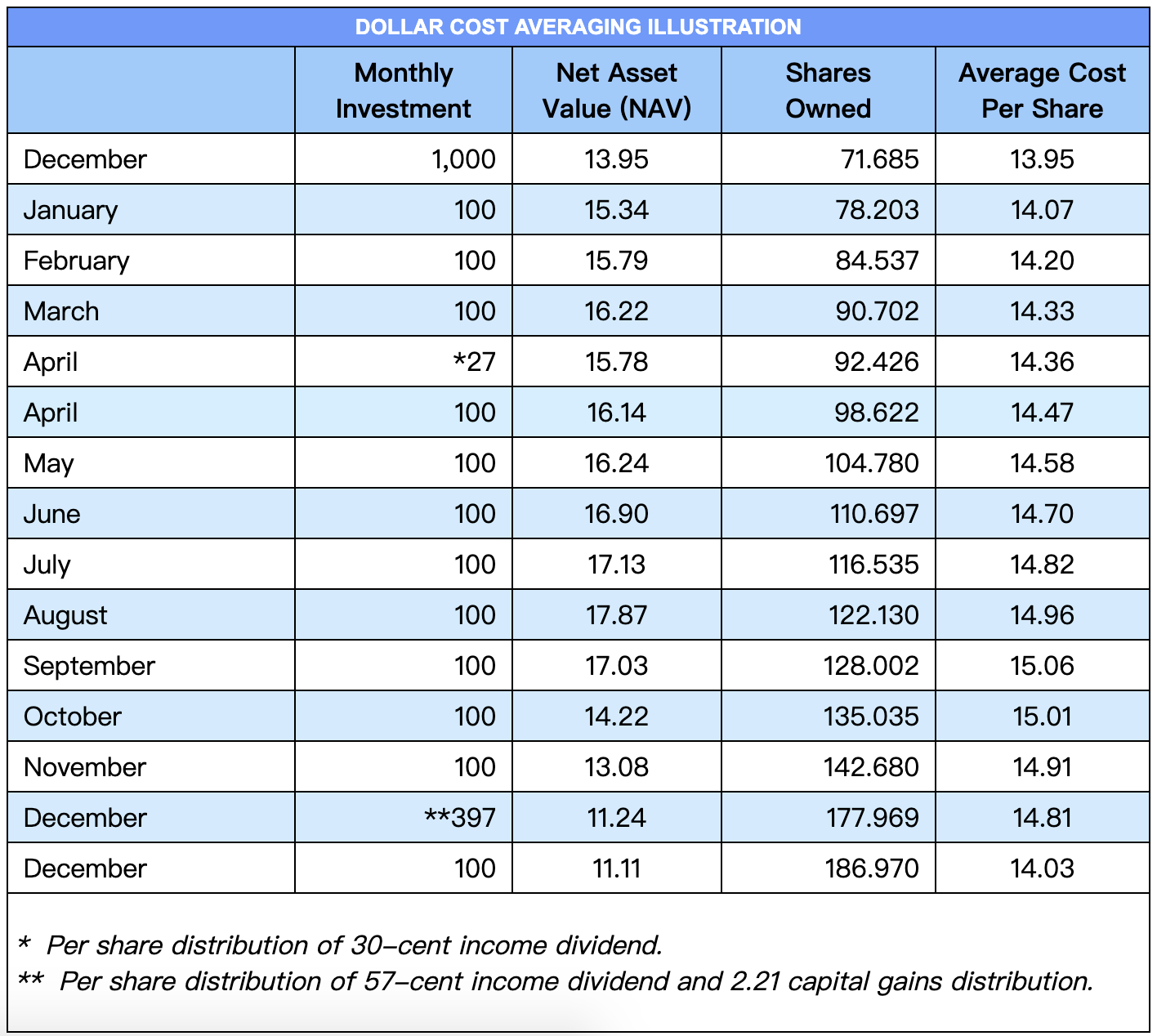| About Us | Newsletter | Youth Support | Career | Activities | Contact |
Newsletter
2009 4th Edition (Other Editions)
SYSTEMATIC INVESTING
How can you continue to build an investment portfolio when the market is up one day and down the next? With swings in the market and fluctuations in the prices of individual securities, many people do not know if they should be buyers or sellers.
One of the most difficult aspects of investing is psychology; that is, being comfortable with your dollar decisions. Remember that most people who fail financially do so because they do not have a plan, or they do not stick with a well-thought out plan.
The principles of Dollar Cost Averaging can help a nervous investor through the ups and downs of today's uncertain market. Using this approach, you invest a fixed number of dollars at regular intervals into a selected stock or mutual fund. In other words, you periodically invest a consistent amount of money and continue to do so, regardless of market fluctuation.
This discipline helps to avoid two common investment errors :
- Investing all funds in the market when prices are high
- Selling out at a big loss when prices fall dramatically
Investing in this manner does NOT guarantee a profit in and of itself, but it does provide the opportunity to build substantial savings.
The great merit of the averaging system is that you purchase relatively more shares when the market is down and fewer when it is high. Consequently, your average cost per share will be somewhat lower than the average price for the dates on which you purchased shares. In dollar cost averaging, investments are made at regular intervals, regardless of market performance. You don't try to "time" the market - you just keep investing.
Here is what would have happened in the declining 1987 market to an initial investment of $1,000 in XYZ, a hypothetical common stock mutual fund, followed by monthly investments of $100. Why select 1987 - because it was a year of major market decline, or correction. It illustrates that Dollar Cost Averaging may work well in bad times as well as good ones.
This example is based on the performance of an actual investment. The name has been changed to avoid endorsing a particular product and to avoid implying that what worked for an investment in 1987 would necessarily work again for that or any other particular investment.

RESULTS OF DOLLAR COST AVERAGING
Average Market Price per Share : 15.20 (Total NAV/Total No. Investments)
Number of Shares Purchased at Avg. Mkt. Price : 172.631 (Total Dollars Invested/Average Market Price per Share)
Dollar Cost Average Price per Share : 14.03 (Total Dollars Invested/Total No. Shares)
Number of Shares Purchased at Dollar Cost Average Price : 186.970 (Total Dollars Invested/DCA Price per Share)
SUMMARY FOR PERIOD

